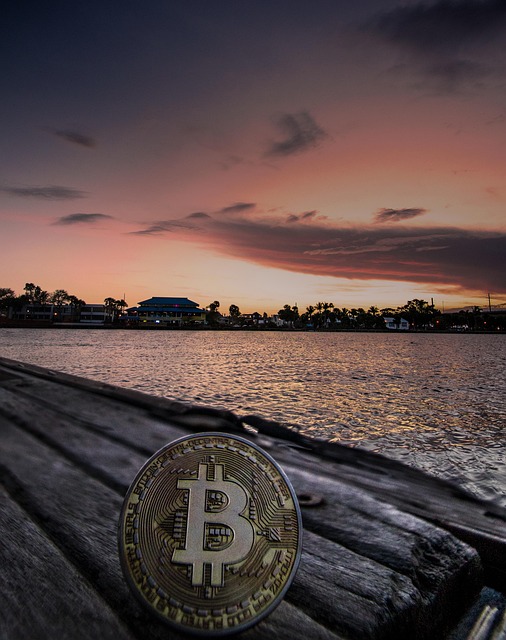The decentralized finance (DeFi) landscape presents unique Regulatory challenges due to its lack of centralized control, making traditional oversight mechanisms inadequate. As DeFi evolves, understanding and managing default mechanisms is crucial for financial stability while preserving innovation. Regulators must balance risk mitigation with potential disruption to DeFi's growth and user experience, focusing on transparency, consumer protection, and effective collaboration between platforms, regulators, and experts to address Regulatory challenges in DeFi.
“Unraveling the complex web of defaults within Decentralized Finance (DeFi) requires a deep dive into a rapidly evolving landscape. This article explores the intricate dynamics of DeFi’s default scenario, from understanding the nuances of its financial innovations to addressing critical regulatory gaps.
We delve into the effects of defaults on users and the ecosystem, presenting case studies of major protocols. Furthermore, it offers strategies to navigate these challenges, emphasizing the need for enhanced transparency and risk mitigation measures in the face of DeFi’s unique regulatory hurdles.”
- Understanding DeFi's Default Landscape: A Complex Web of Financial Innovations
- Regulatory Gaps: Why Traditional Rules May Not Apply to Decentralized Finance
- The Impact of Default on DeFi Users and the Ecosystem
- Case Studies: Navigating Defaults in Major DeFi Protocols
- Strategies for Mitigating Risks and Enhancing Transparency in the Face of DeFi Defaults
Understanding DeFi's Default Landscape: A Complex Web of Financial Innovations

The landscape of decentralized finance (DeFi) is a complex web of financial innovations, where understanding default mechanisms presents a significant challenge. Unlike traditional finance, DeFi platforms operate outside of centralized regulatory frameworks, creating a unique set of complexities when it comes to managing risk and default situations. As DeFi continues to evolve, so do the regulatory challenges it faces.
Default in DeFi can manifest in various forms, from lending platform borrowers failing to repay their loans to stablecoin issuers losing reserve integrity. Navigating these scenarios requires innovative approaches that balance financial stability with the decentralized nature of the ecosystem. Regulatory interventions, while crucial for mitigating risks, must carefully consider the potential impact on the industry’s growth and user experience, especially as DeFi seeks to revolutionize traditional financial systems.
Regulatory Gaps: Why Traditional Rules May Not Apply to Decentralized Finance

In the realm of decentralized finance (DeFi), regulatory gaps pose significant challenges, as traditional rules may not fully apply to this innovative sector. The very nature of DeFi—built on blockchain technology and distributed networks—renders it difficult for existing legal frameworks to keep pace. Unlike centralized financial institutions, DeFi platforms operate without a physical location, making it hard for regulators to assert jurisdiction. Additionally, the transparency and immutability of blockchain transactions present unique challenges in terms of consumer protection, anti-money laundering (AML), and know-your-customer (KYC) procedures.
These regulatory challenges necessitate a nuanced approach. As DeFi continues to evolve, so too must the regulatory landscape. Adaptability is key; regulators must find ways to balance innovation with oversight. This involves exploring new tools and methods that account for the decentralized nature of these platforms while still ensuring fairness, transparency, and protection for all participants in the DeFi ecosystem.
The Impact of Default on DeFi Users and the Ecosystem

The concept of default holds significant weight in the decentralized finance (DeFi) space, presenting both opportunities and pitfalls for users and the overall ecosystem. When a DeFi protocol or project faces financial distress, it can have far-reaching consequences, impacting not just investors but also the broader community relying on these platforms. Default events introduce complex Regulatory challenges in DeFi, as traditional financial oversight mechanisms struggle to adapt to this novel and often decentralized environment.
In times of default, users may face liquidity issues, with their assets trapped within failing projects. This can lead to a loss of confidence in the DeFi sector, potentially causing a ripple effect across various protocols. Moreover, Regulatory authorities grapple with how to respond, as they must balance the need for consumer protection with the decentralized nature of these peer-to-peer financial systems. The outcome often involves intricate legal and technical considerations, aiming to mitigate risks while fostering innovation in the DeFi realm.
Case Studies: Navigating Defaults in Major DeFi Protocols

In the dynamic landscape of decentralized finance (DeFi), navigating defaults is a complex challenge, particularly as the sector continues to evolve rapidly without traditional regulatory oversight. Case studies on major DeFi protocols reveal how default mechanisms, often designed to protect users and maintain system stability, can become sources of significant Regulatory challenges in DeFi. For instance, when a protocol experiences a liquidity crunch or a smart contract bug, automatic redemption processes can trigger widespread panic selling, leading to further price instability and potential losses for users.
These scenarios underscore the need for thoughtful design and robust risk management strategies. Regulators are increasingly scrutinizing DeFi platforms to ensure transparency, mitigate systemic risks, and protect investors. As DeFi protocols mature, addressing default mechanisms in a way that balances user protection with market efficiency will be crucial. Effective solutions might involve improved audit processes, better communication of risk factors to users, and the integration of automated stabilization tools capable of responding swiftly to market disruptions without causing further harm.
Strategies for Mitigating Risks and Enhancing Transparency in the Face of DeFi Defaults

In the dynamic landscape of Decentralized Finance (DeFi), mitigating risks and enhancing transparency are paramount, especially as defaults start to emerge. As DeFi continues to evolve, regulatory challenges play a significant role in shaping the industry’s resilience against potential failures. One key strategy involves strengthening oversight frameworks that keep pace with technological advancements. This includes developing robust regulations that ensure smart contracts are auditable and secure, thereby minimizing bugs and vulnerabilities that could lead to defaults.
Additionally, fostering collaboration between DeFi platforms, regulators, and industry experts is crucial. Implementing best practices for risk management, transparent reporting mechanisms, and early warning systems can help identify potential default scenarios promptly. By sharing data and insights, these stakeholders can collectively enhance the overall health of the DeFi ecosystem, ensuring that transparency isn’t just a goal but an integral part of mitigating risks in this innovative financial sector.
The decentralized finance (DeFi) landscape, while offering unprecedented opportunities, presents unique regulatory challenges that traditional financial systems struggle to address. As defaults become more prevalent, it’s clear that understanding and filling these gaps are crucial for the long-term sustainability of the ecosystem. By examining case studies and adopting strategies that enhance transparency, users can better navigate risks associated with DeFi protocols. Moving forward, collaboration between developers, regulators, and community members is essential to foster a robust and resilient DeFi environment that prioritizes user protection while encouraging innovation.
